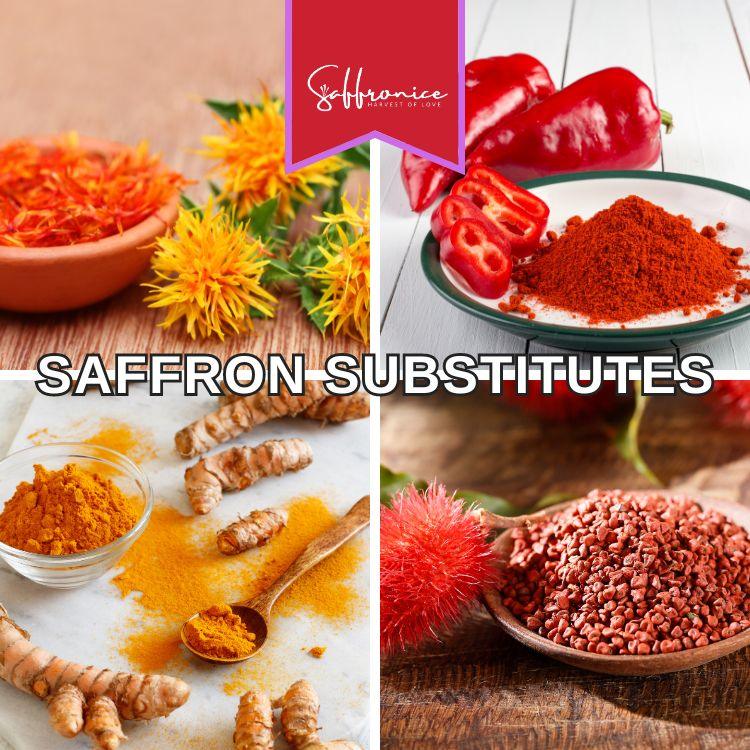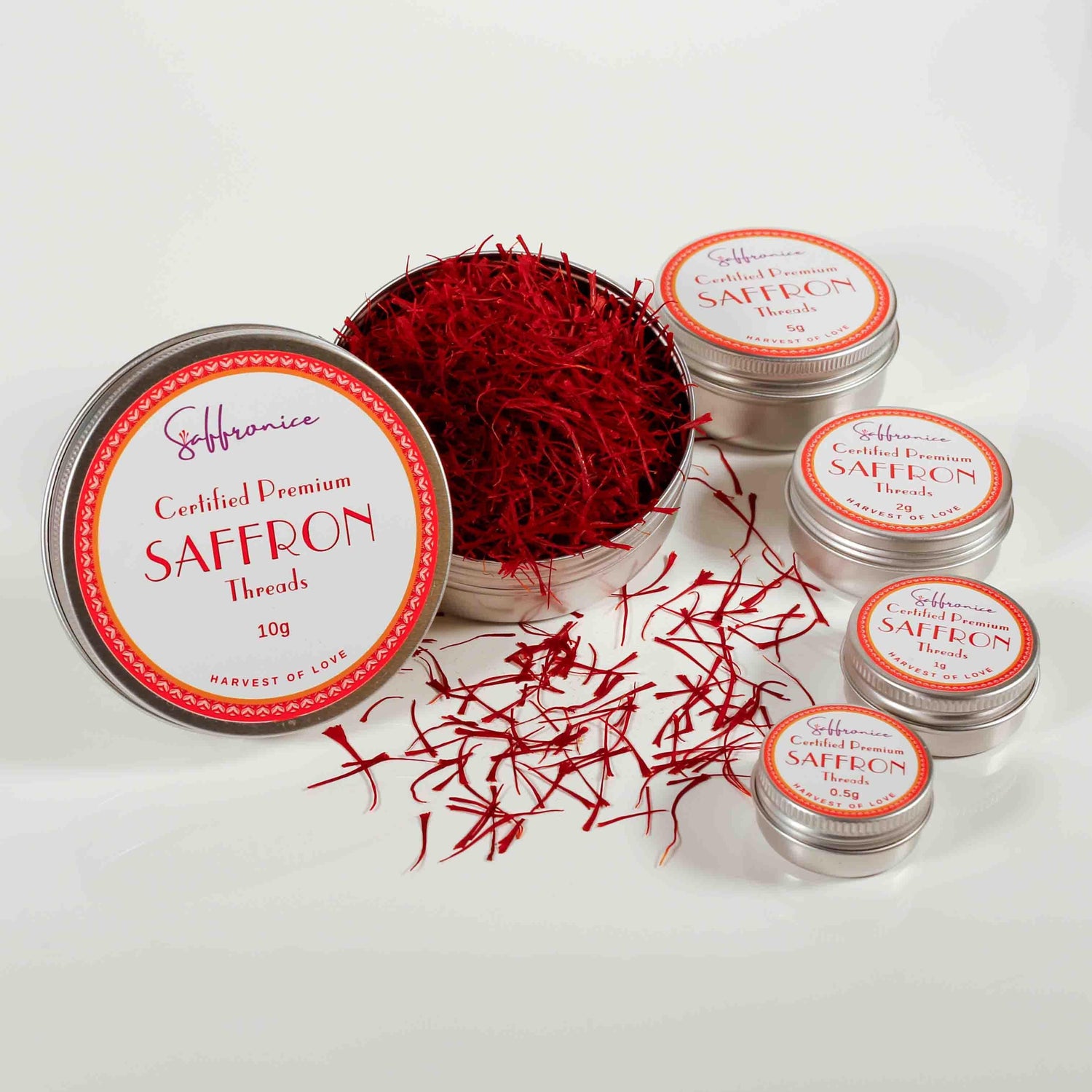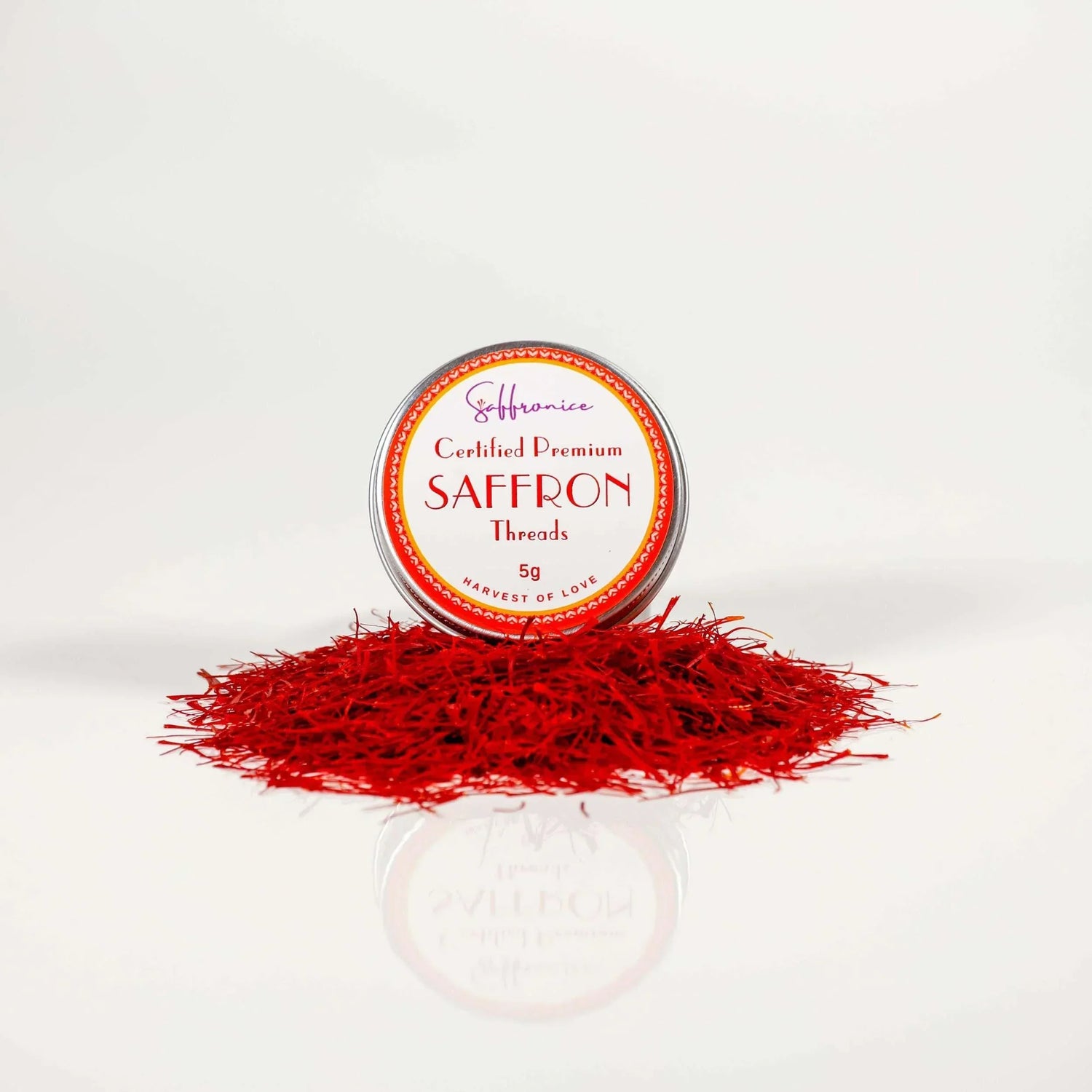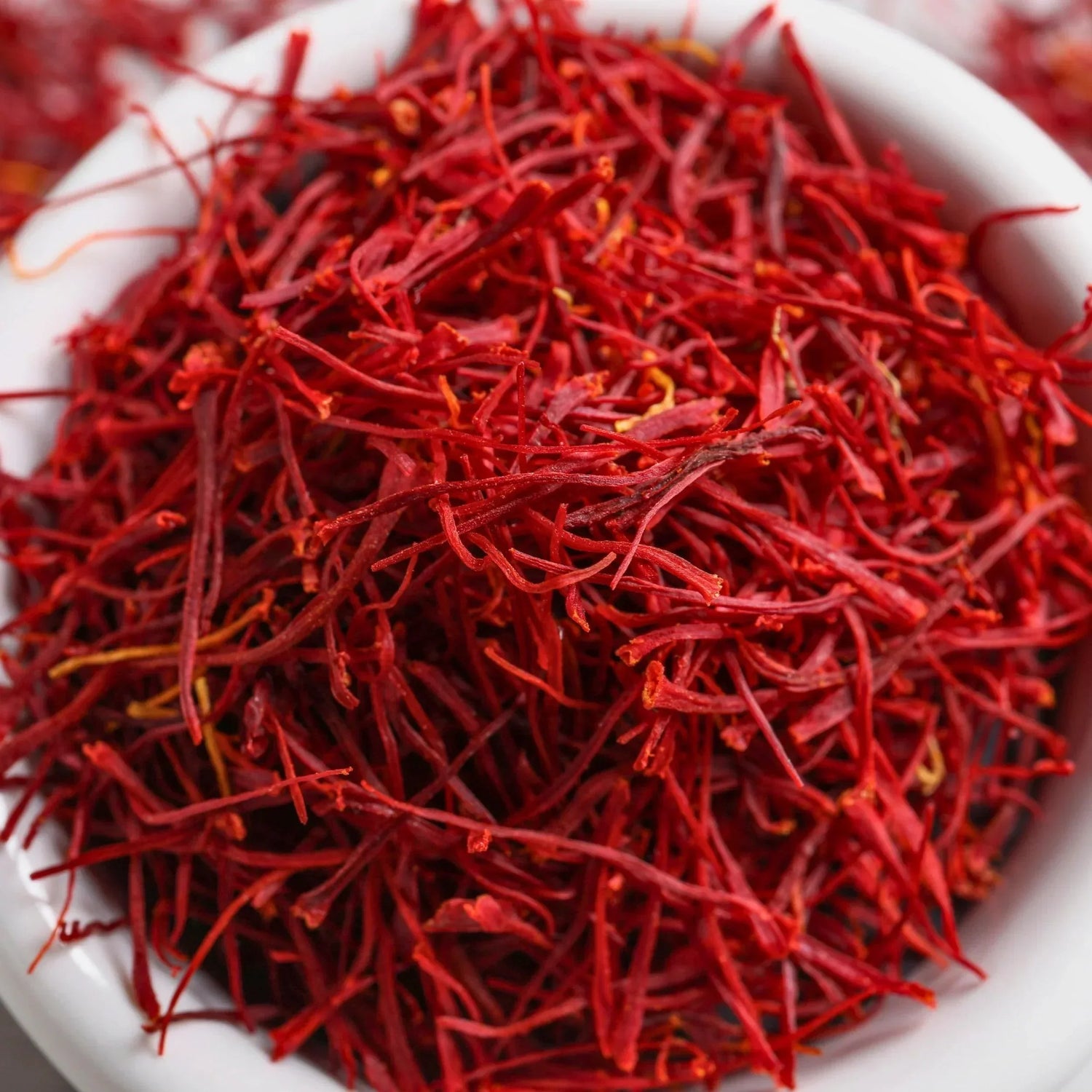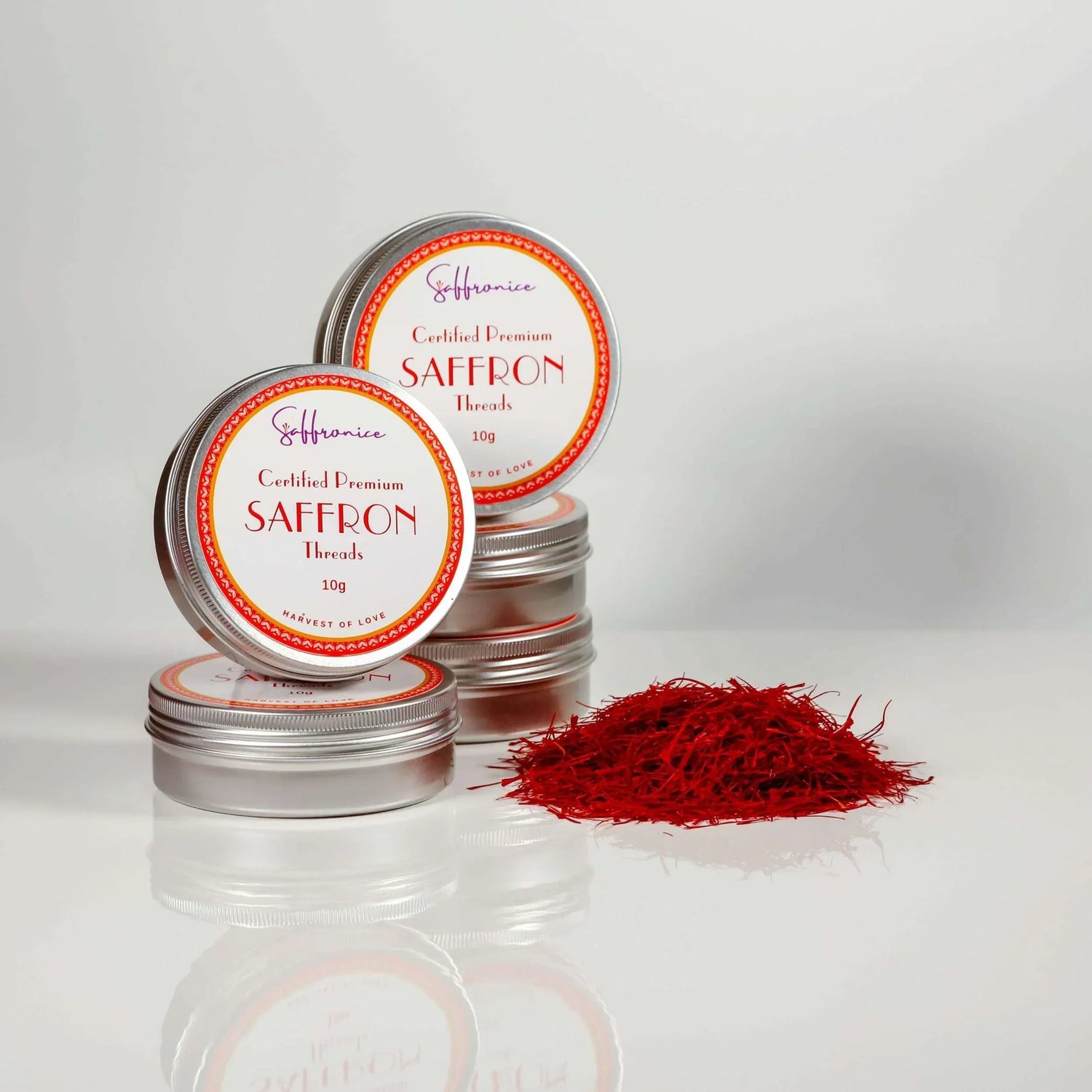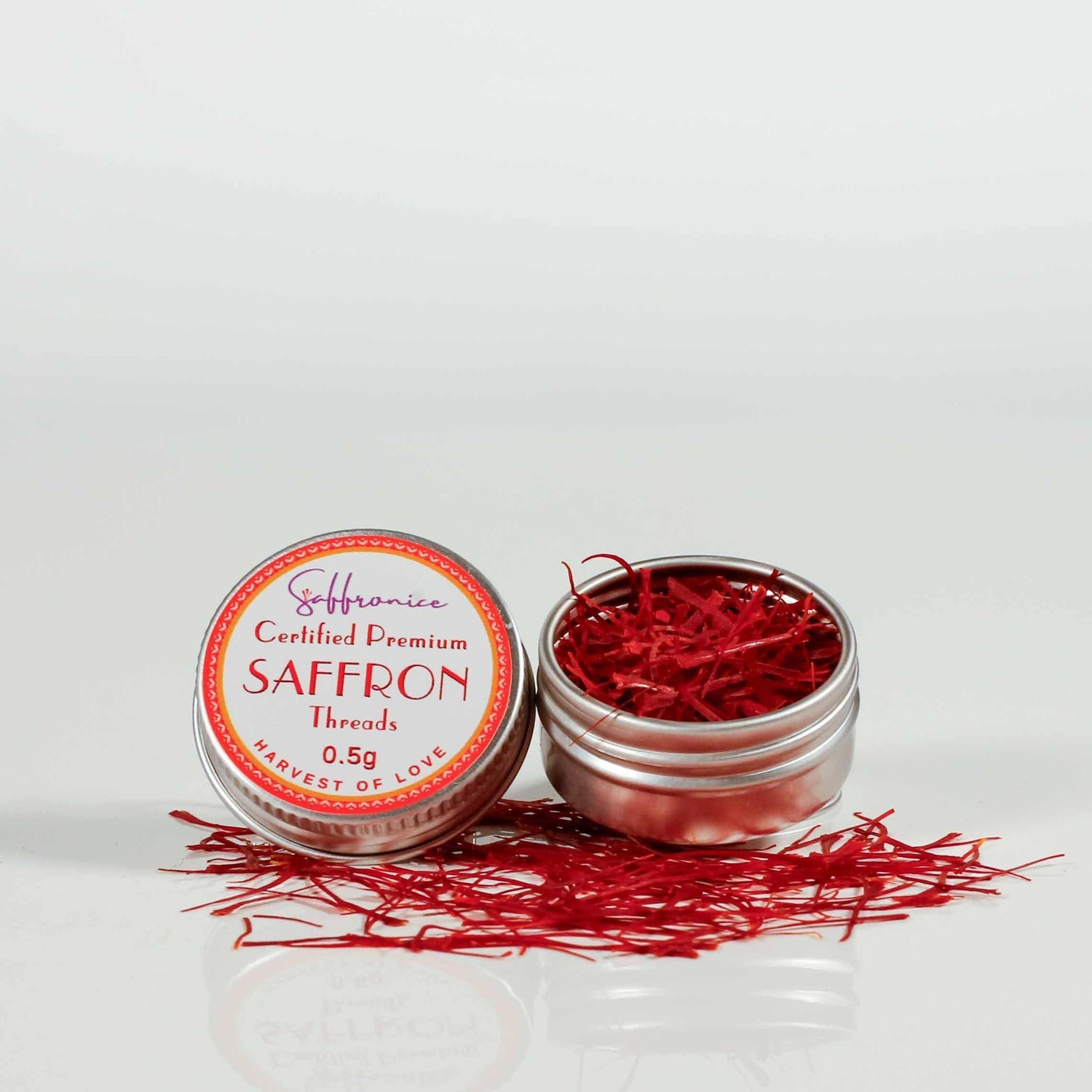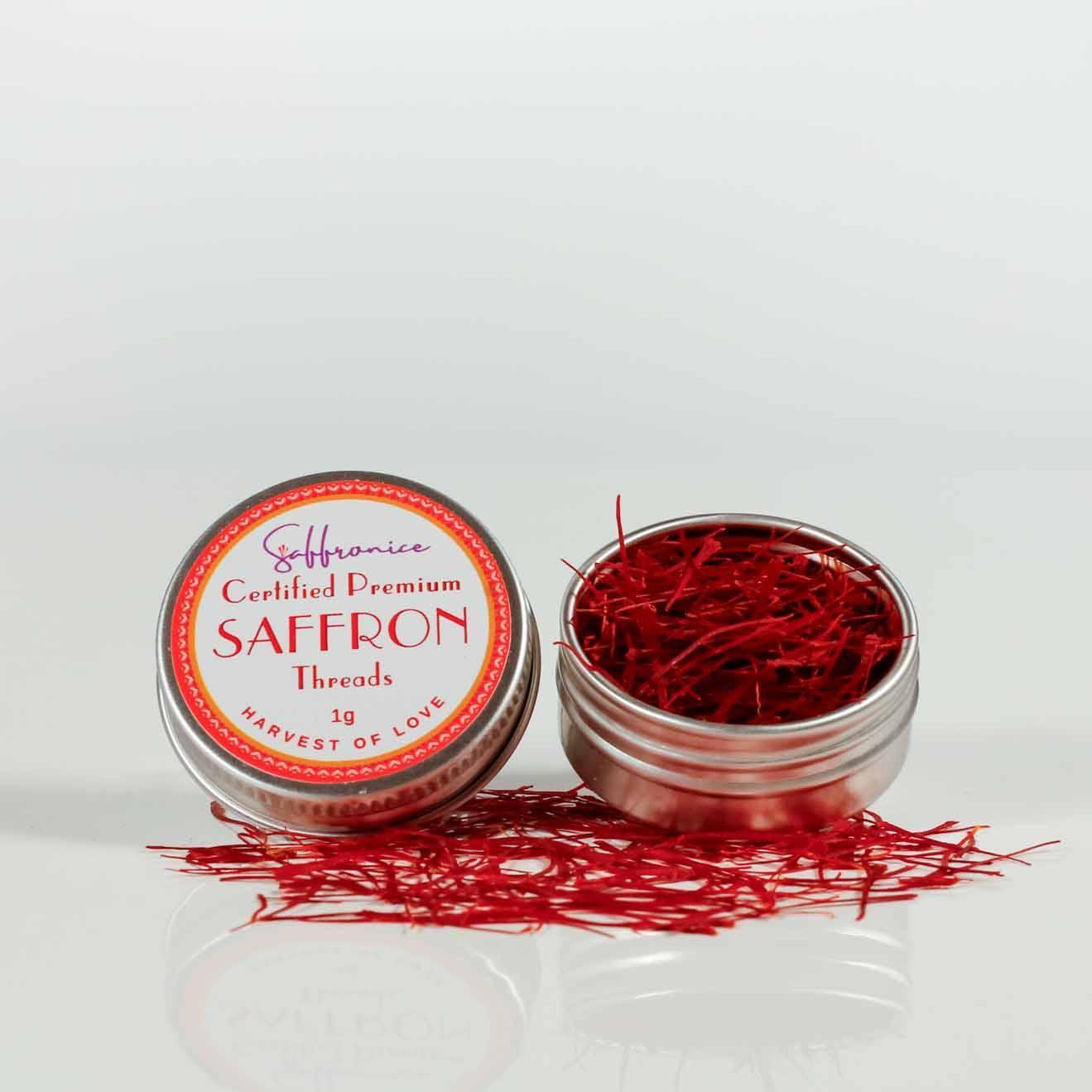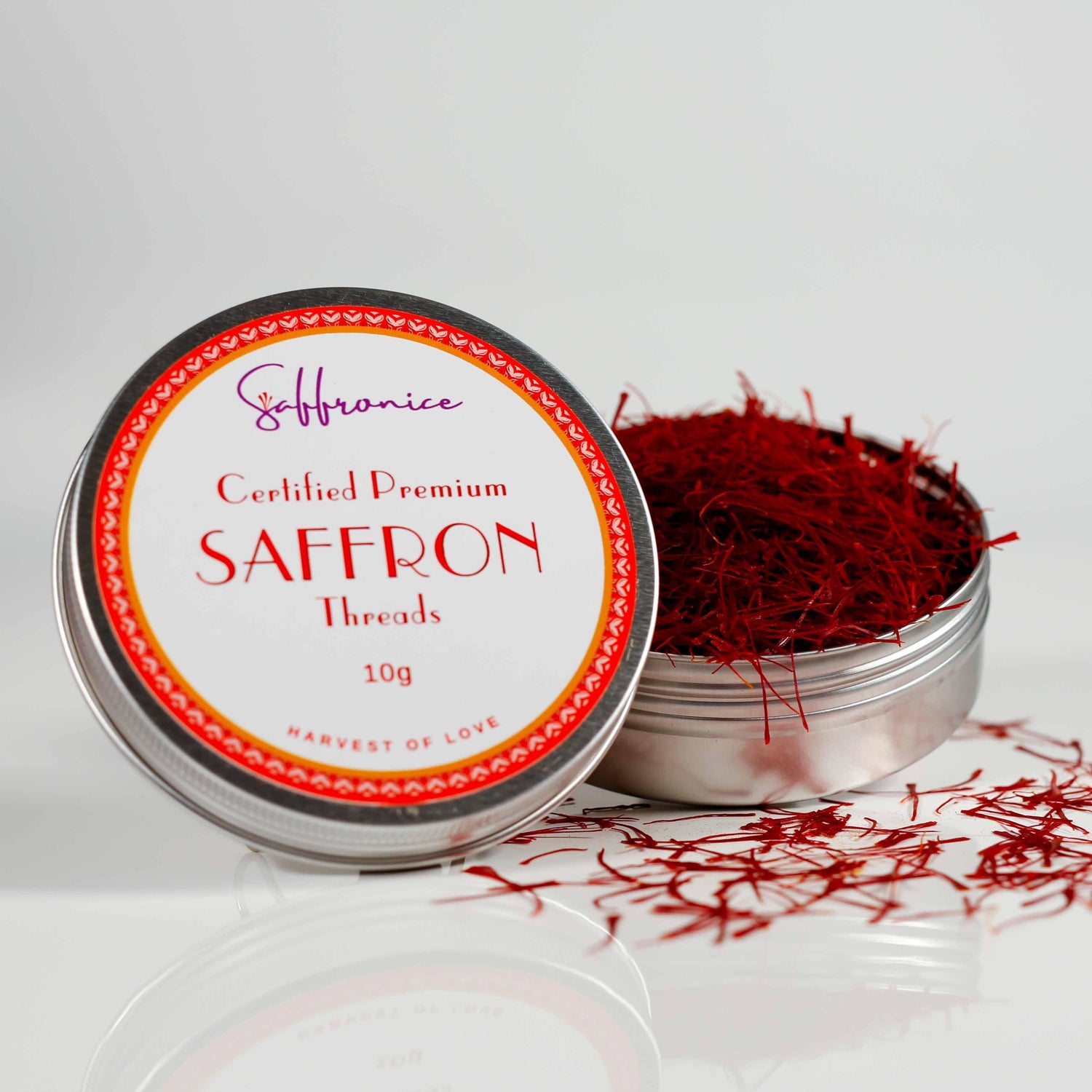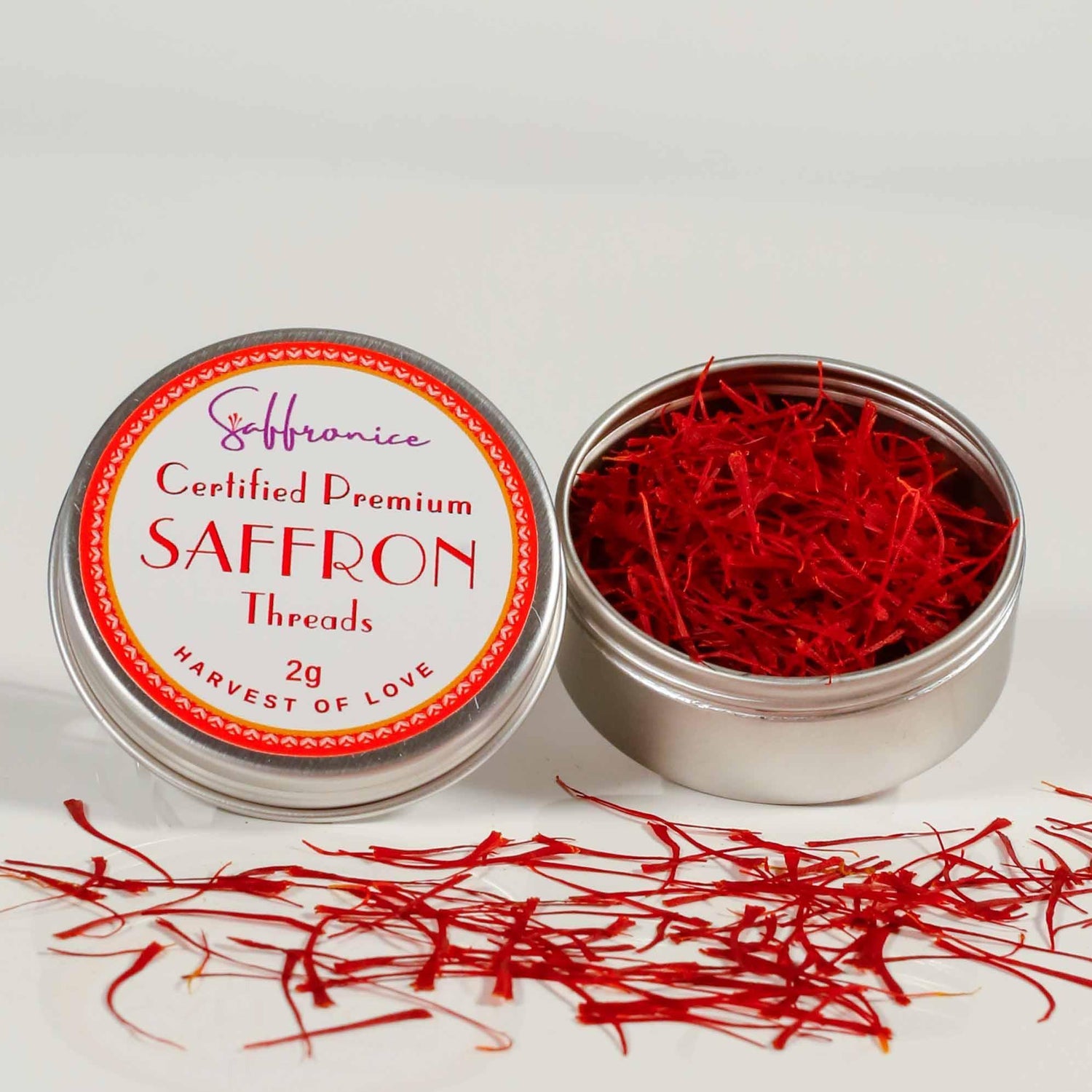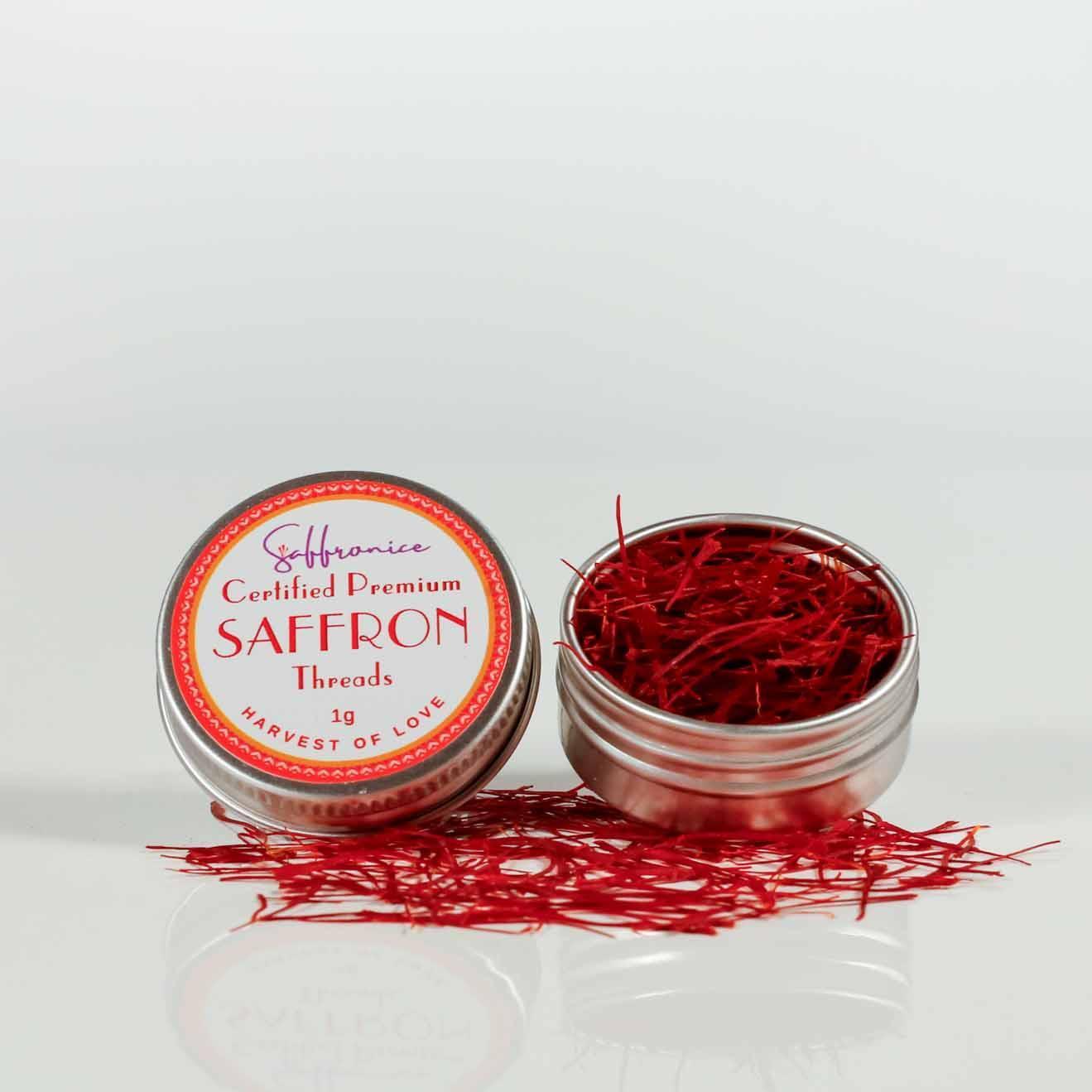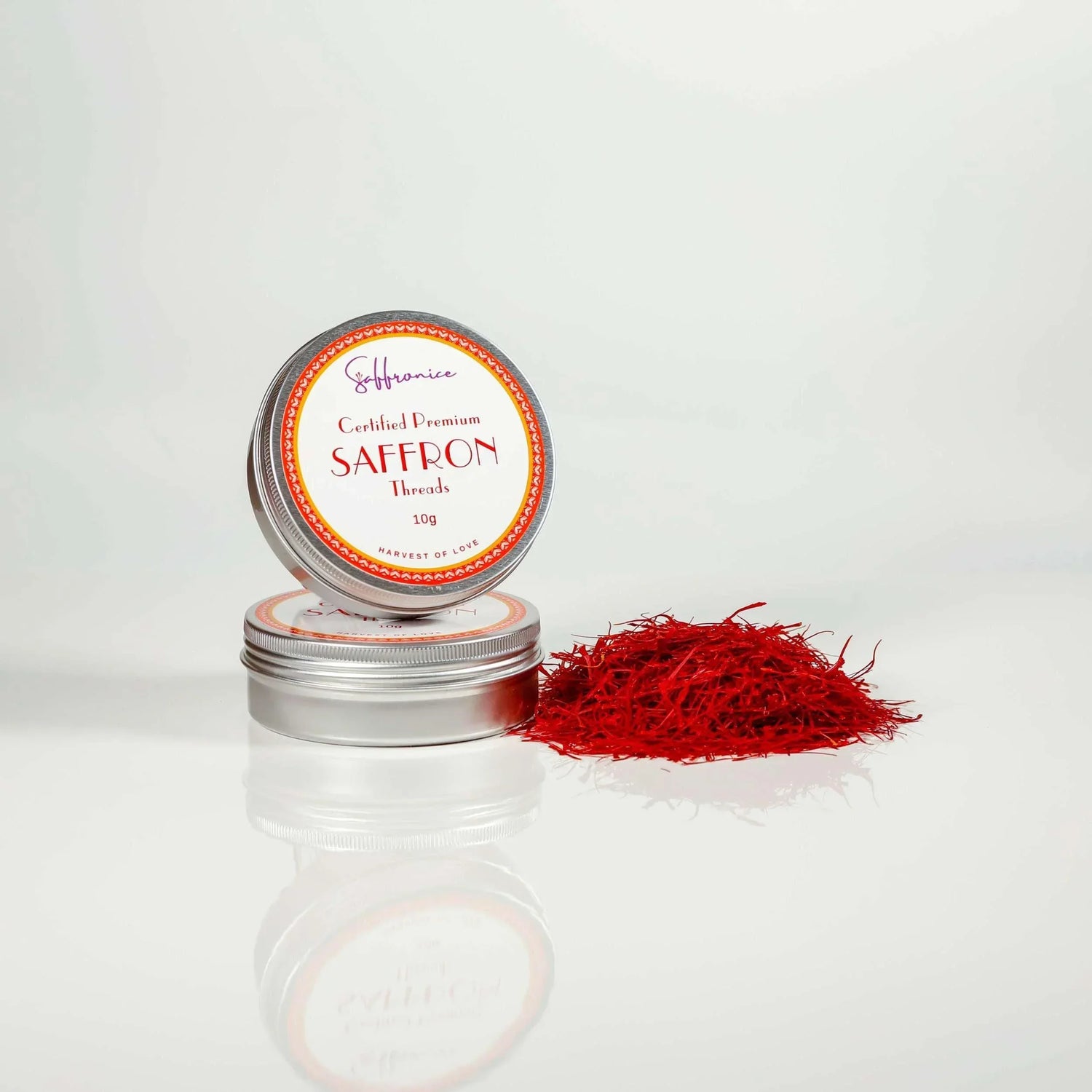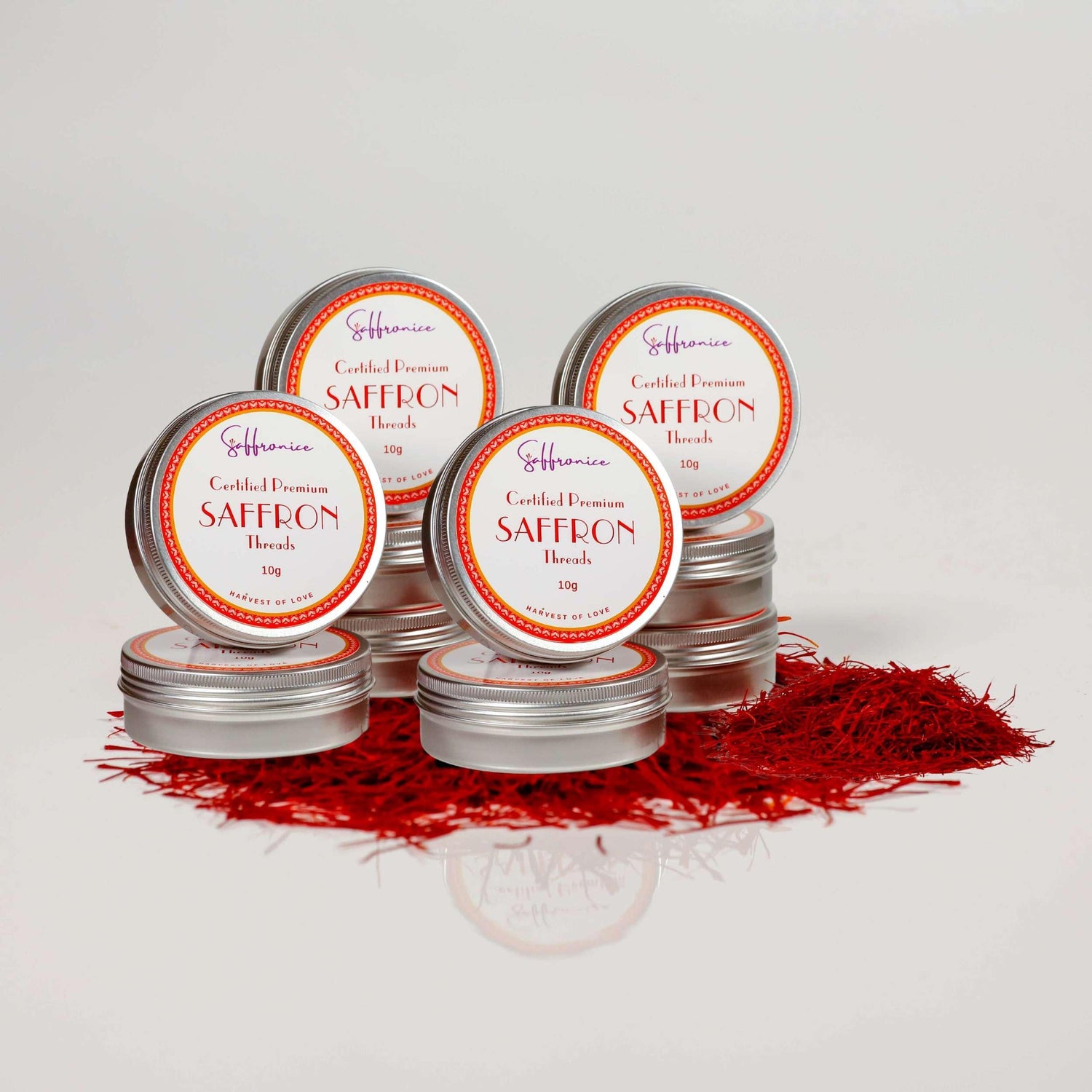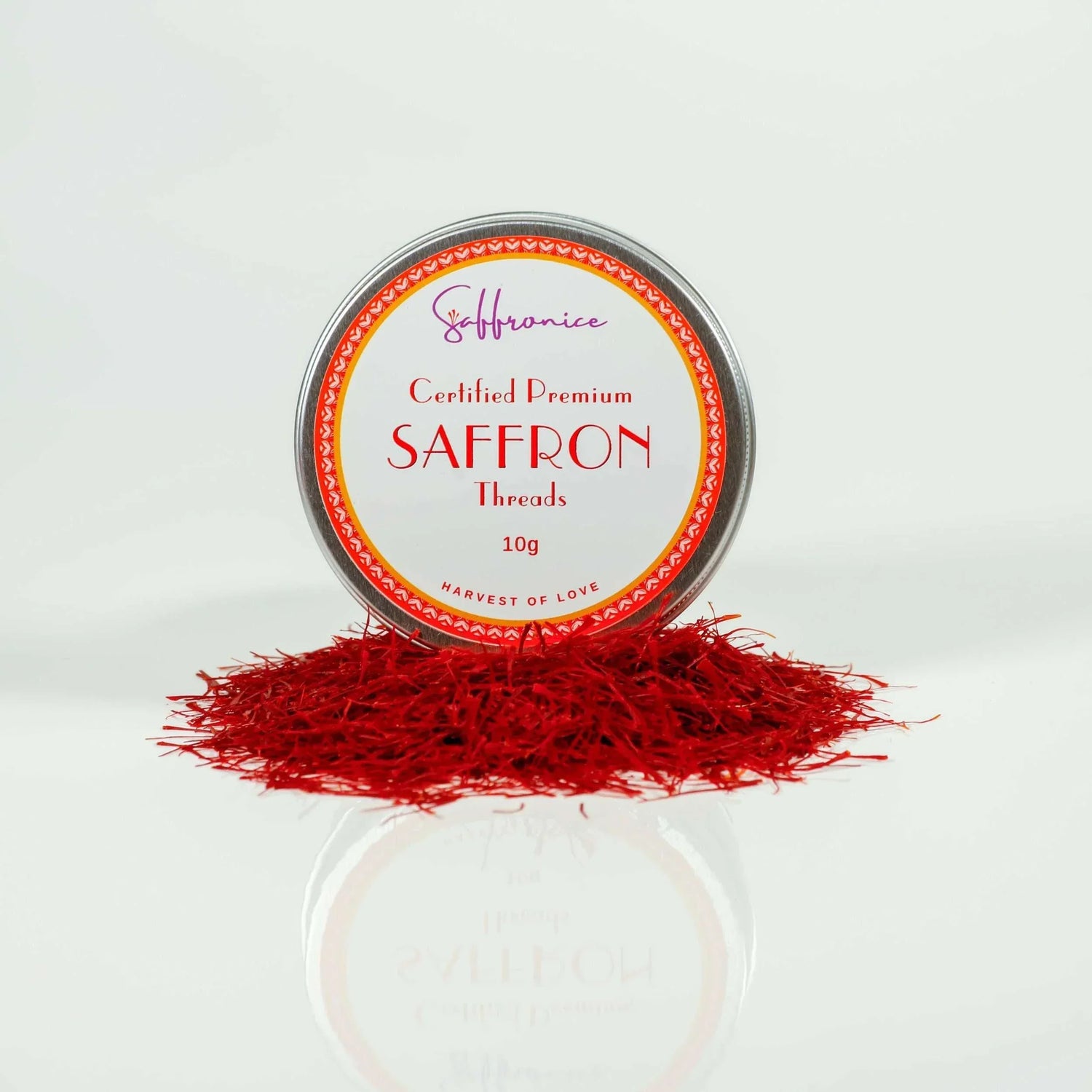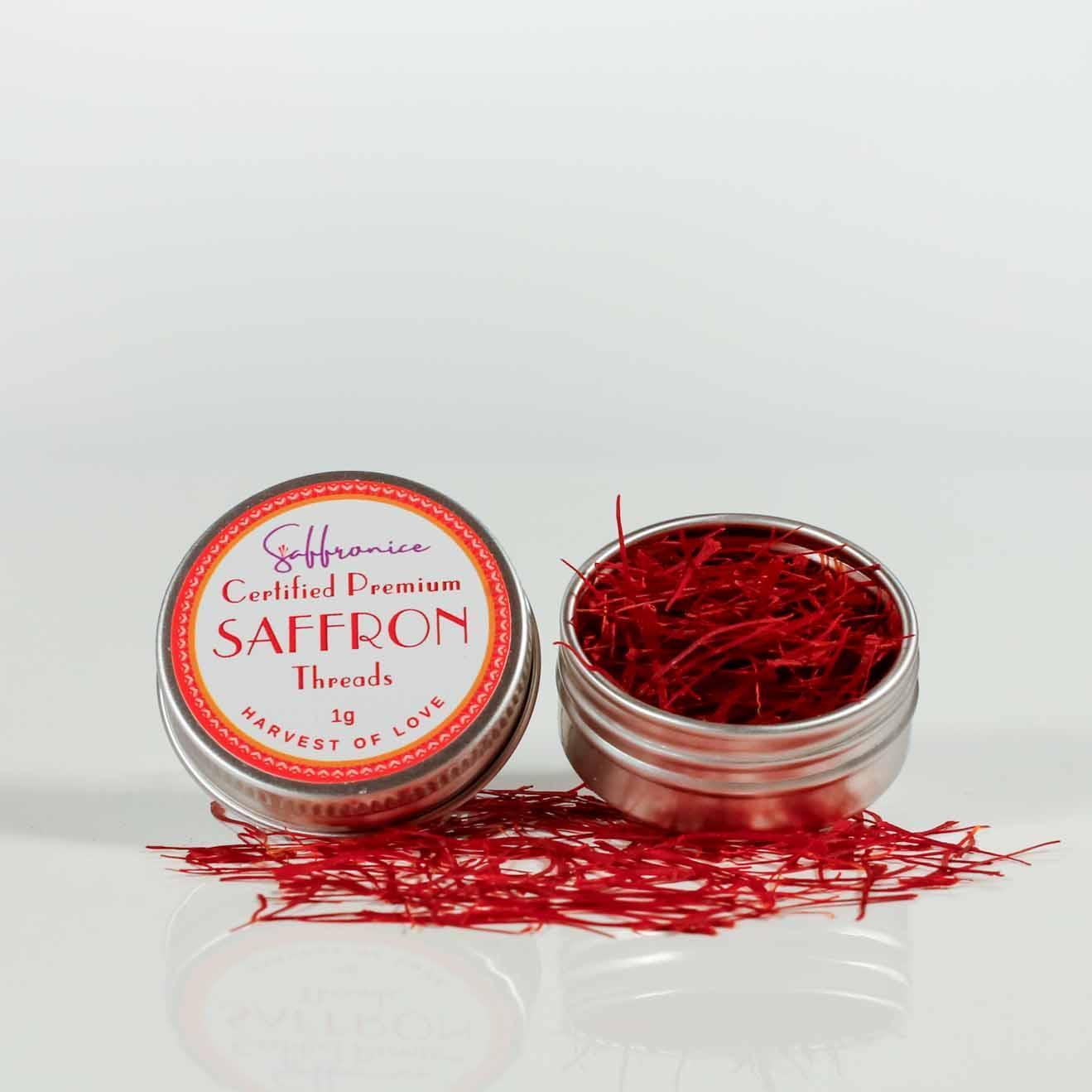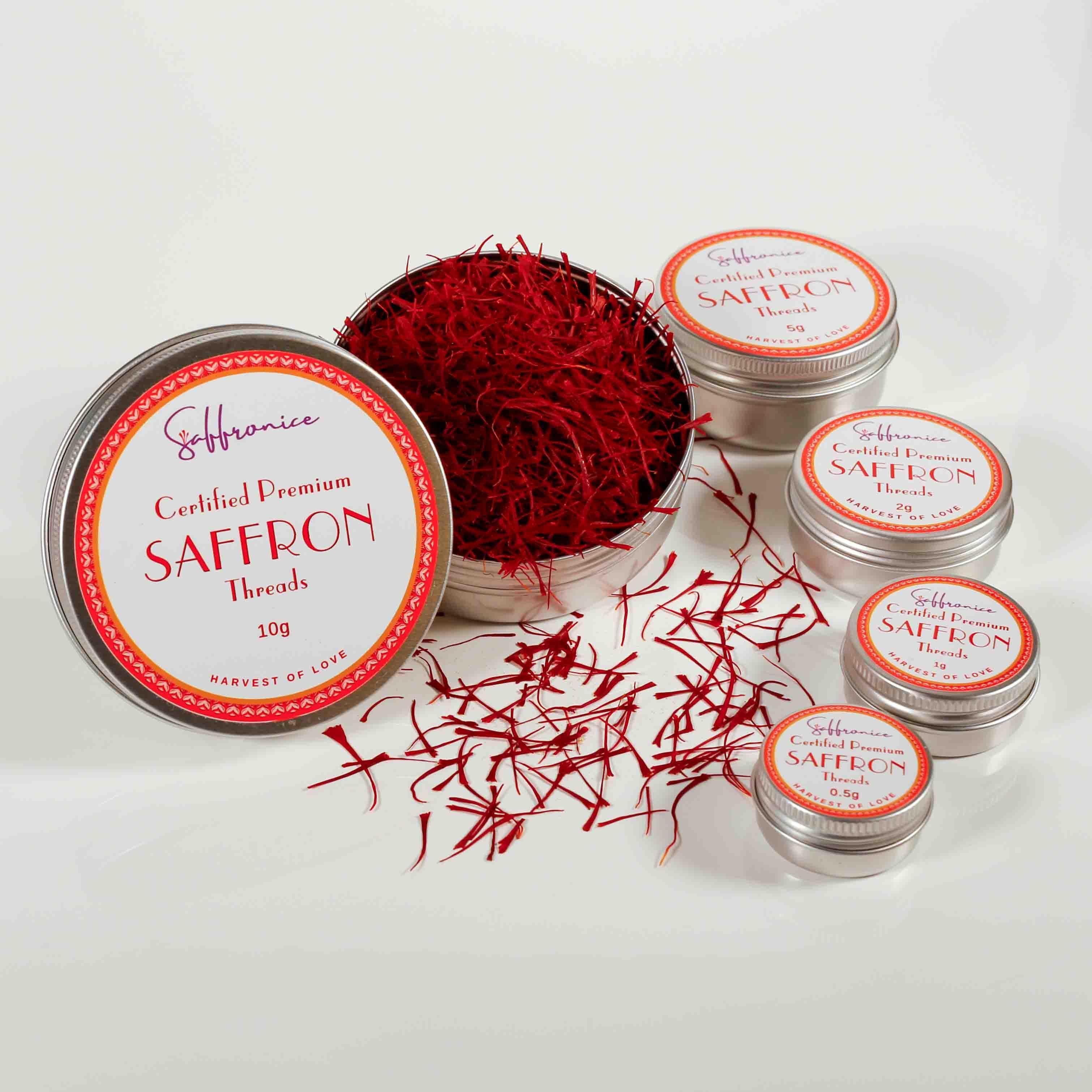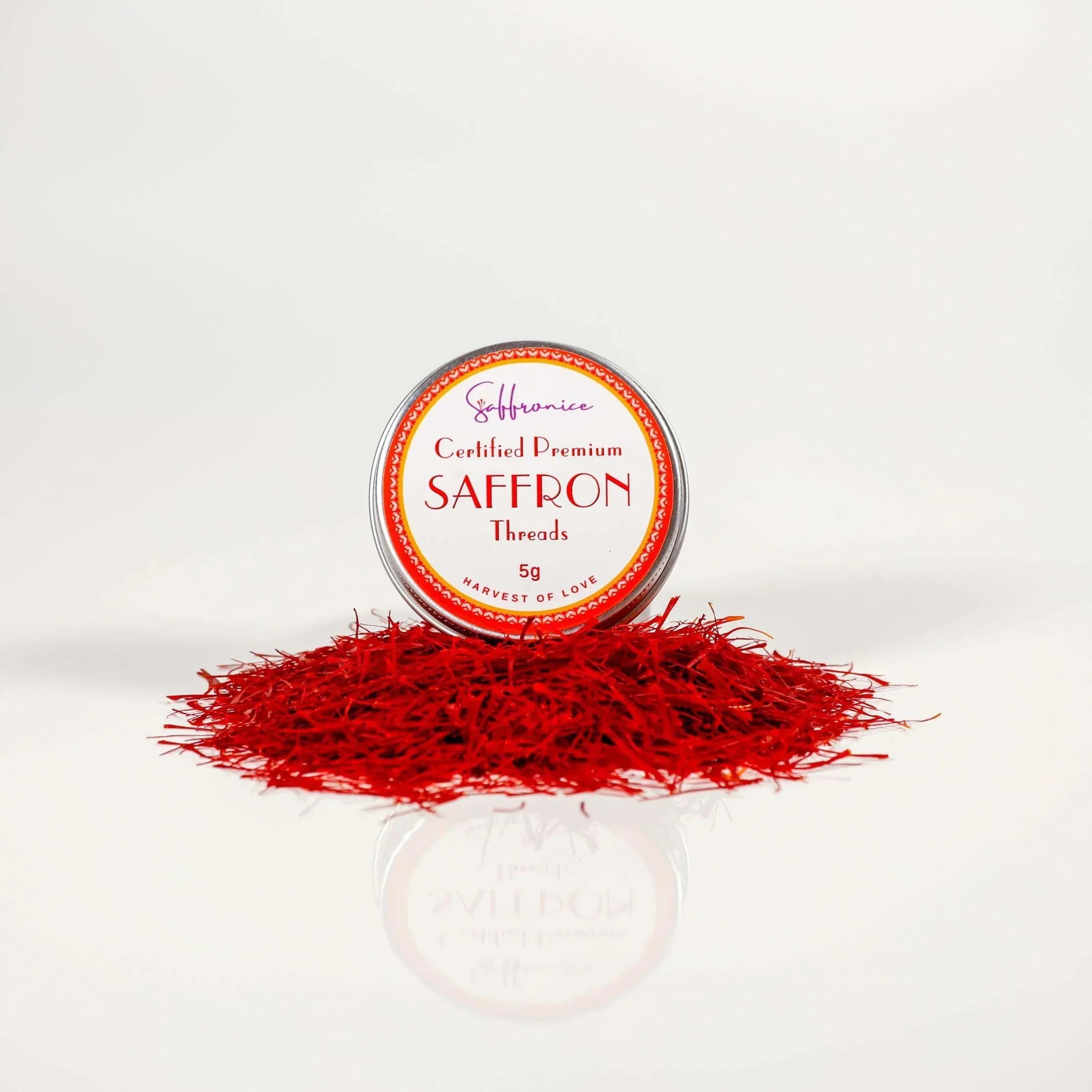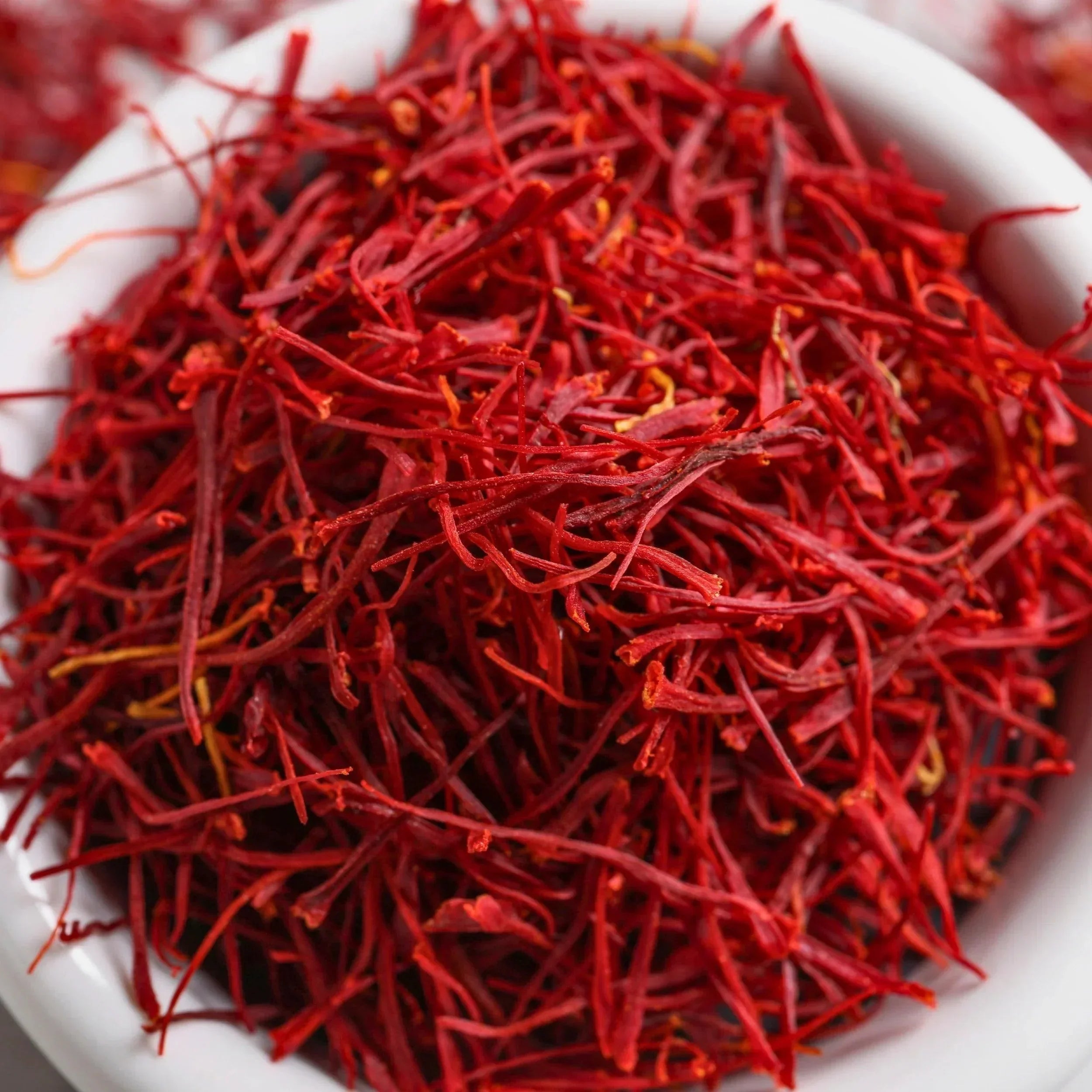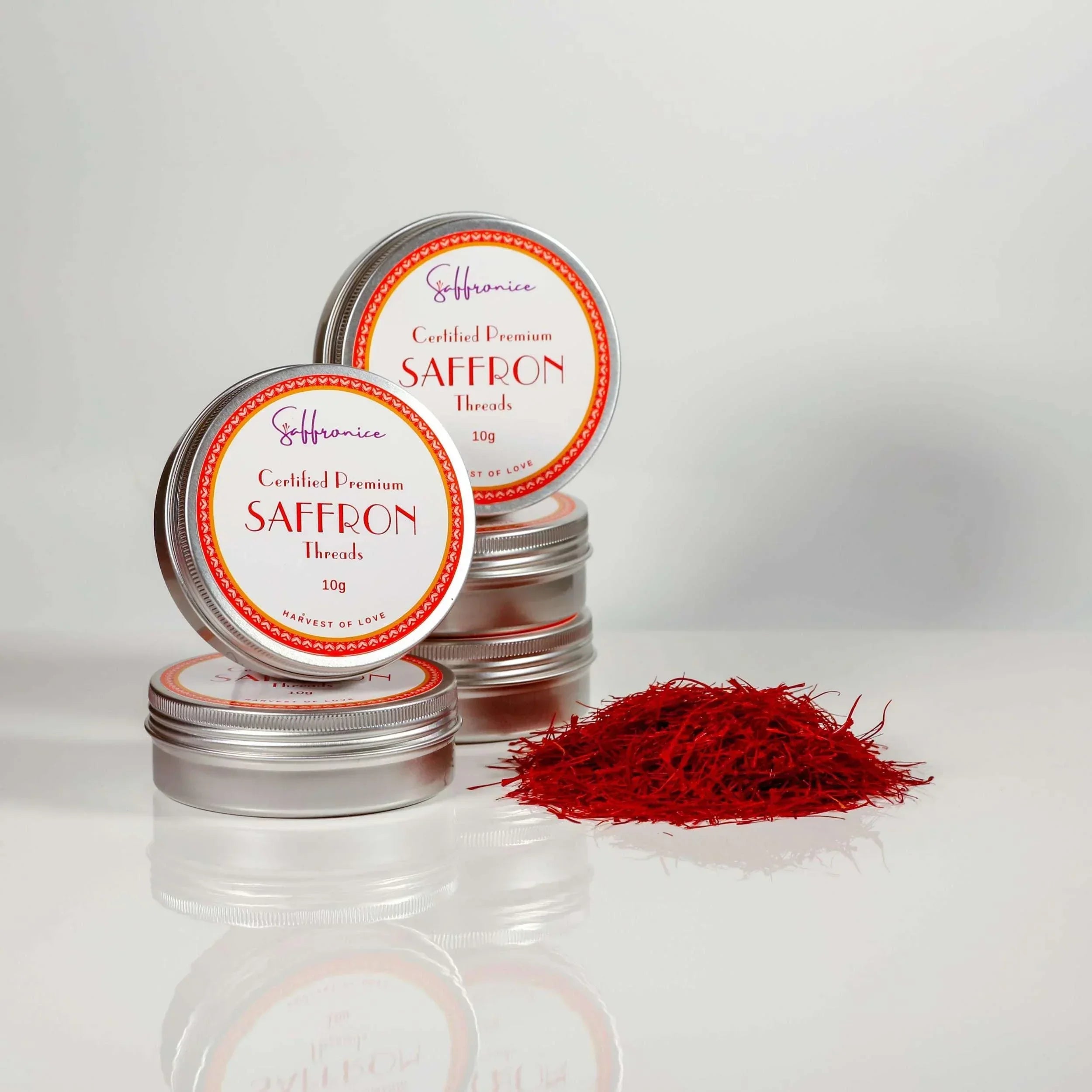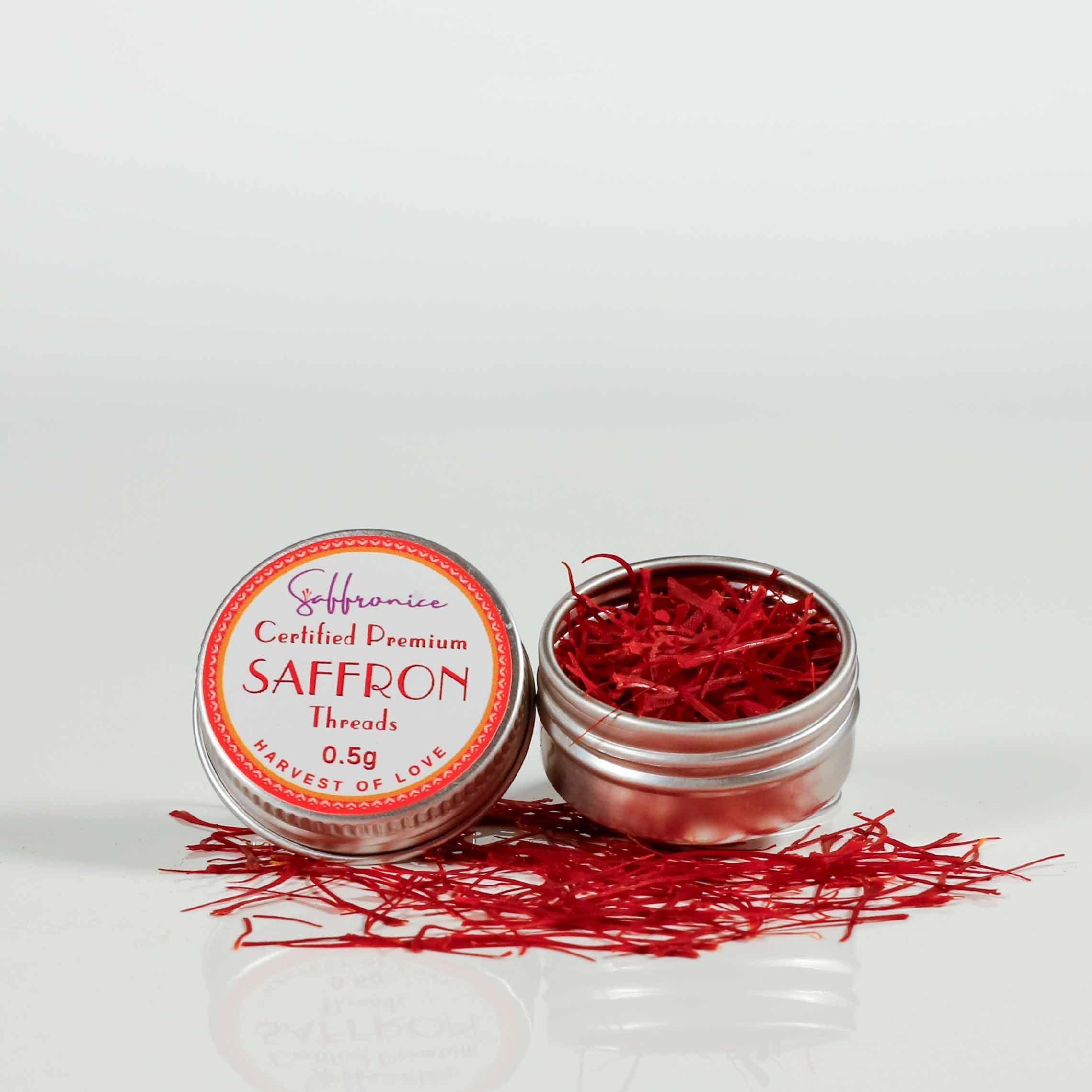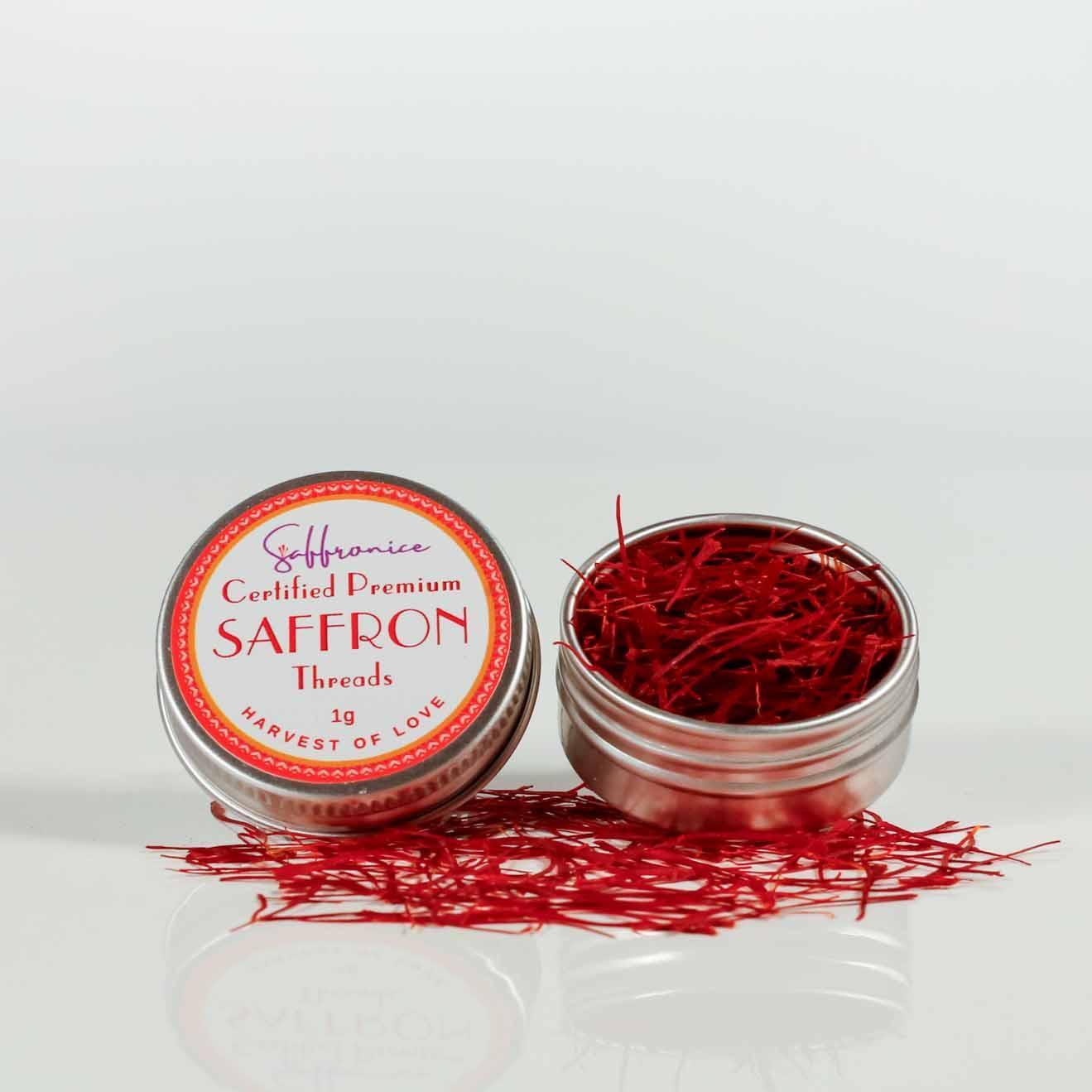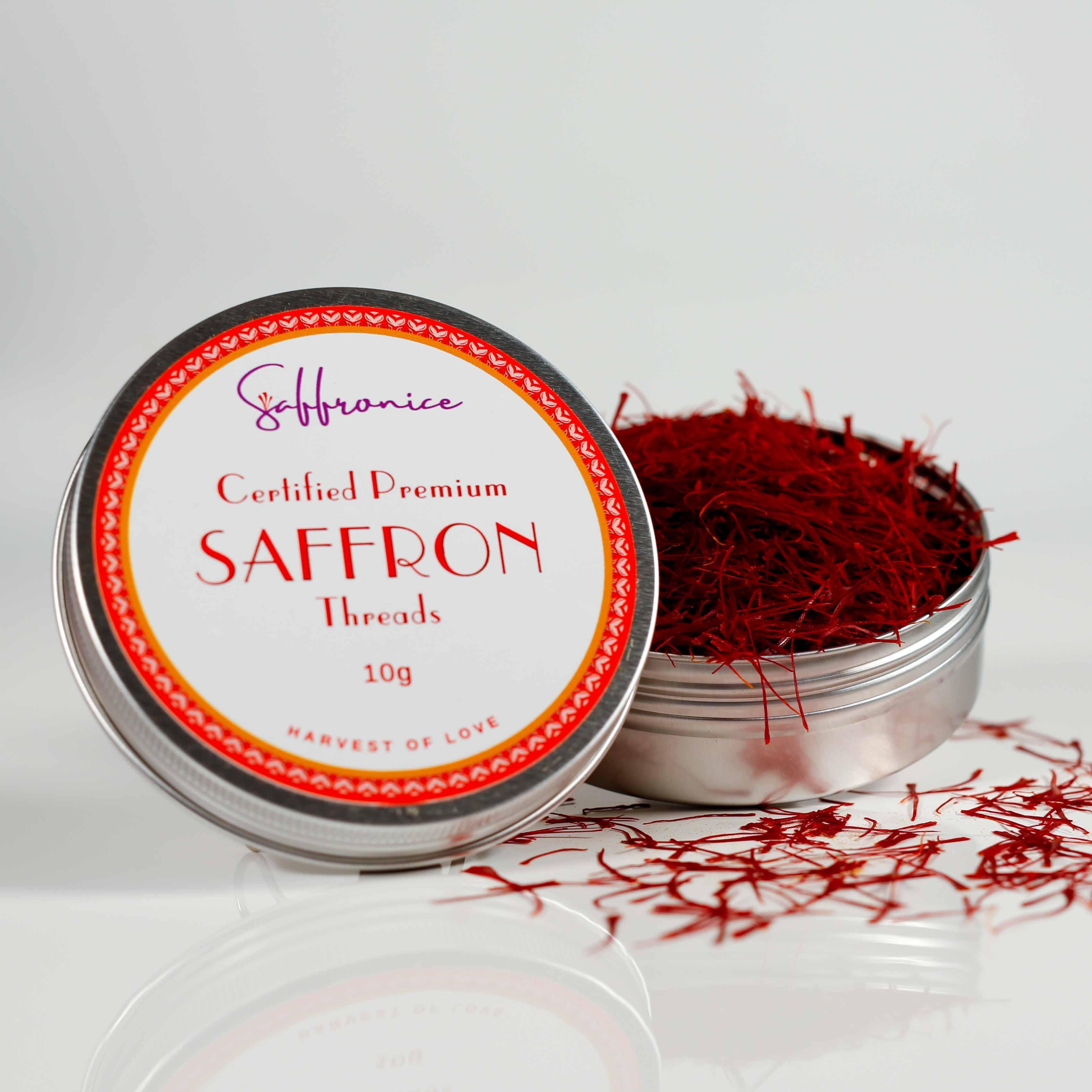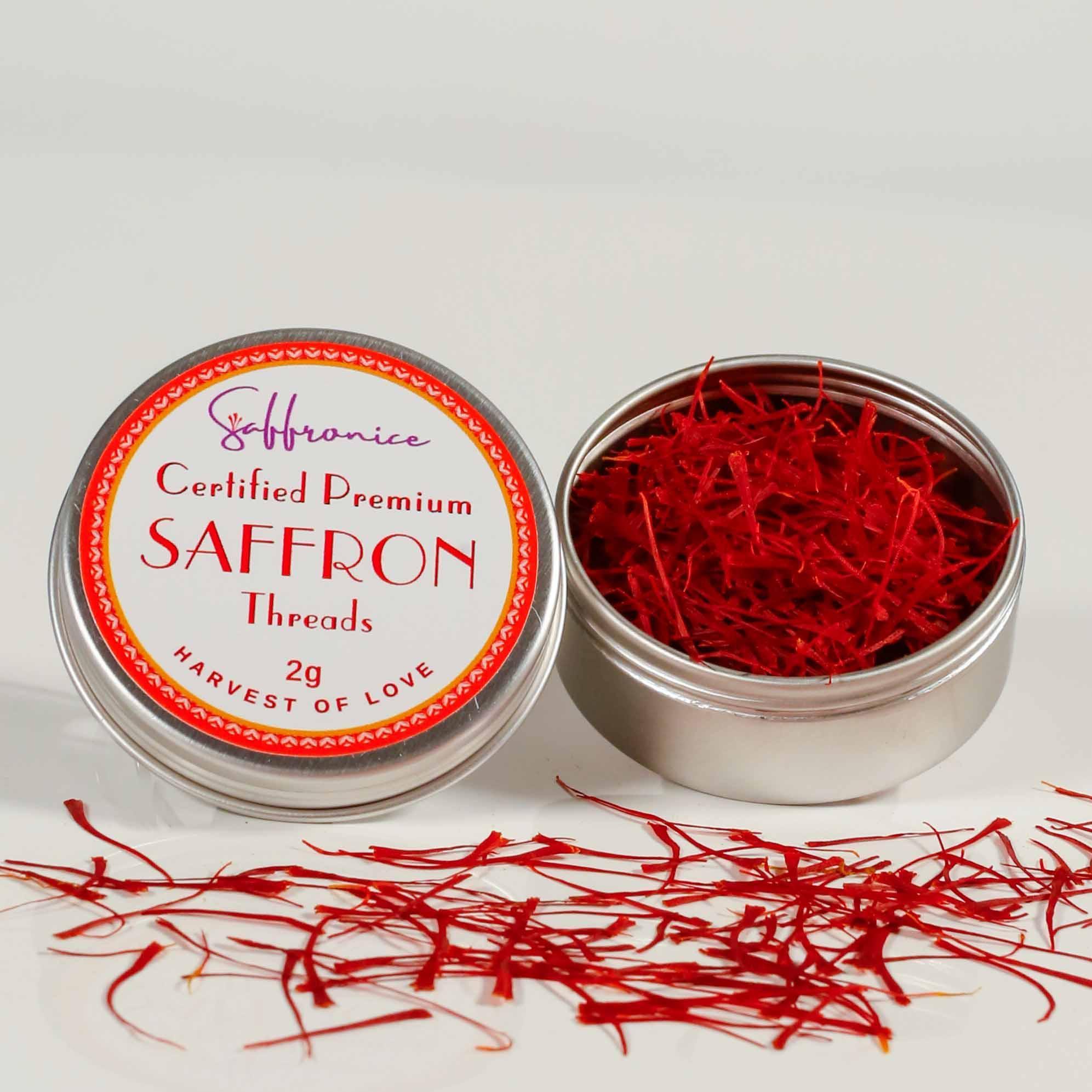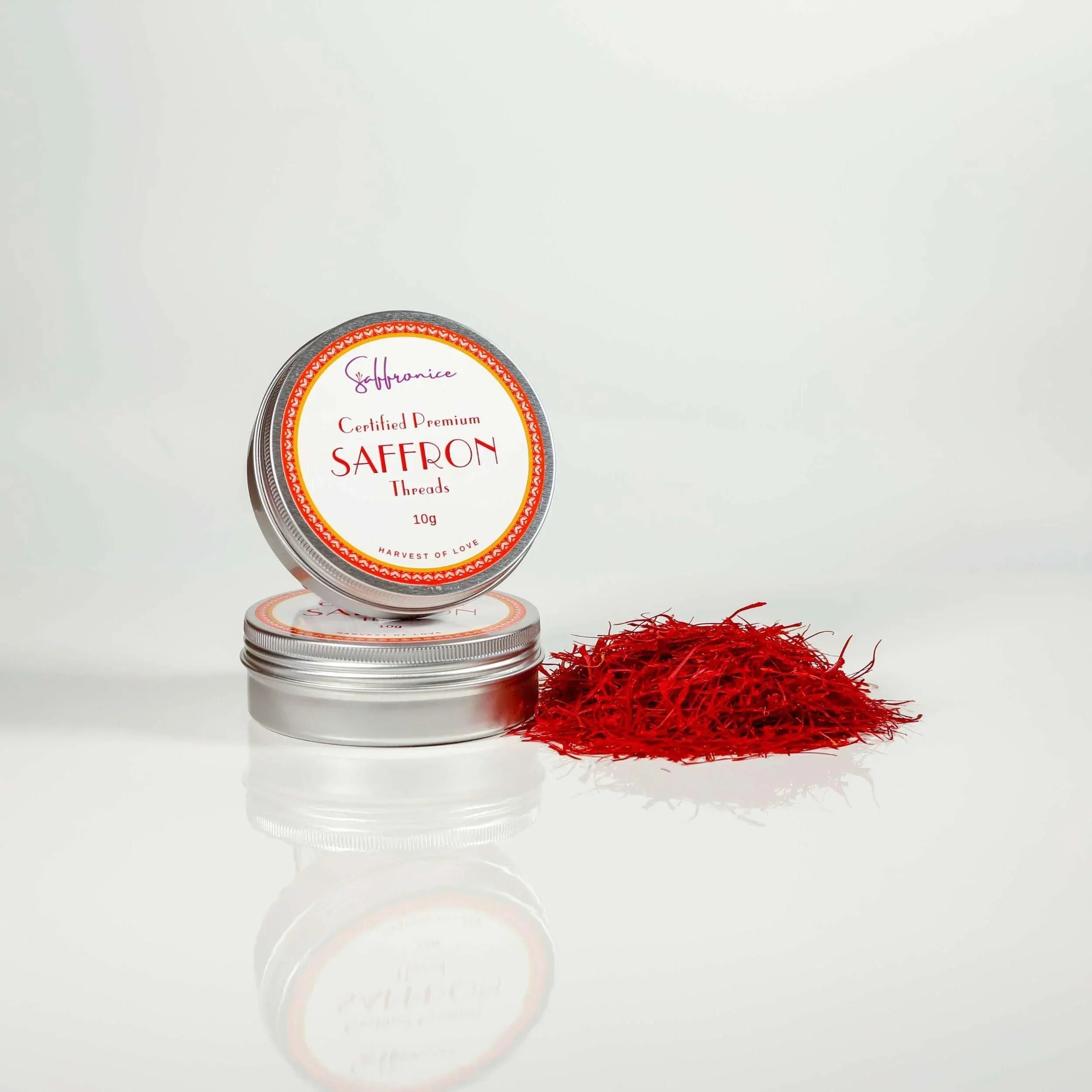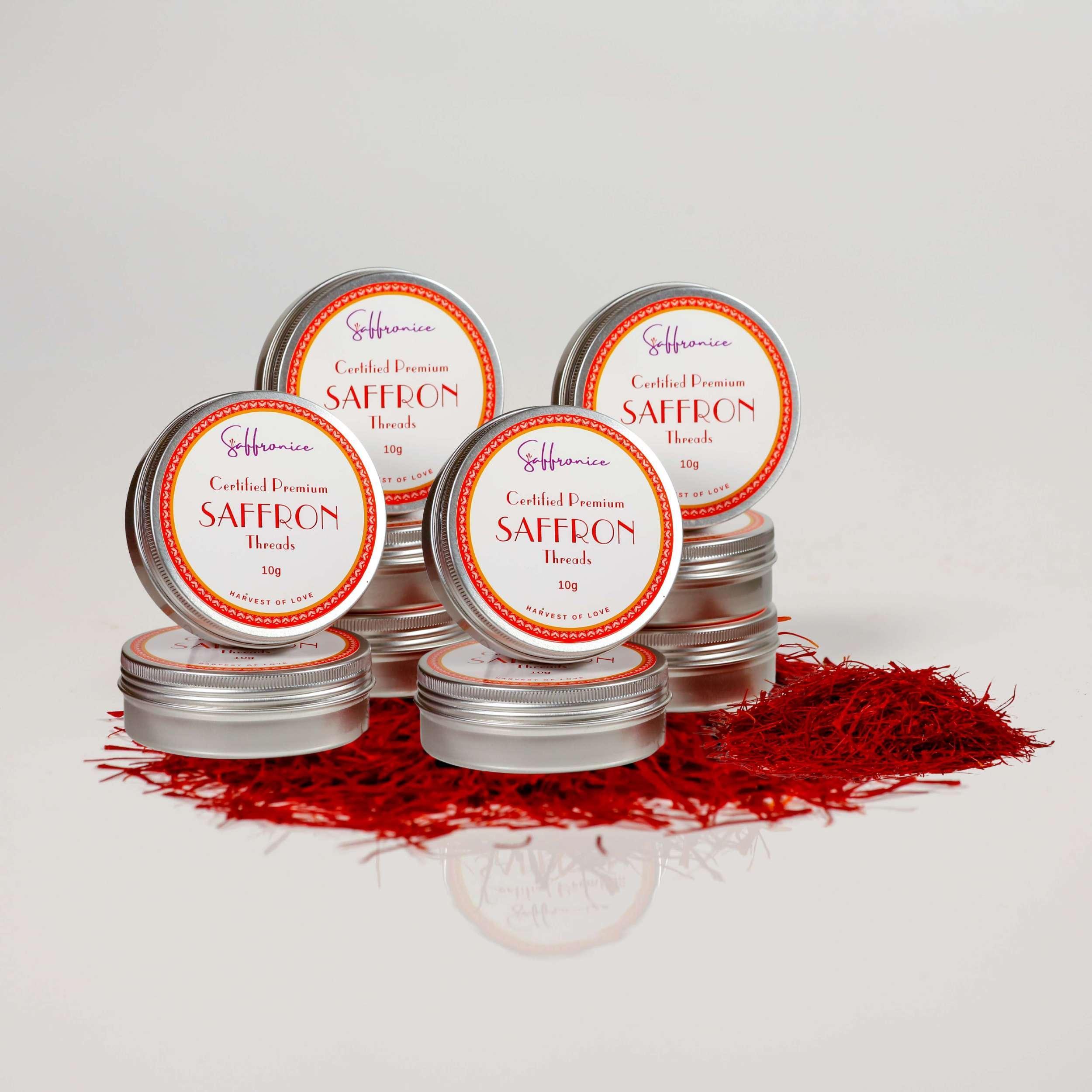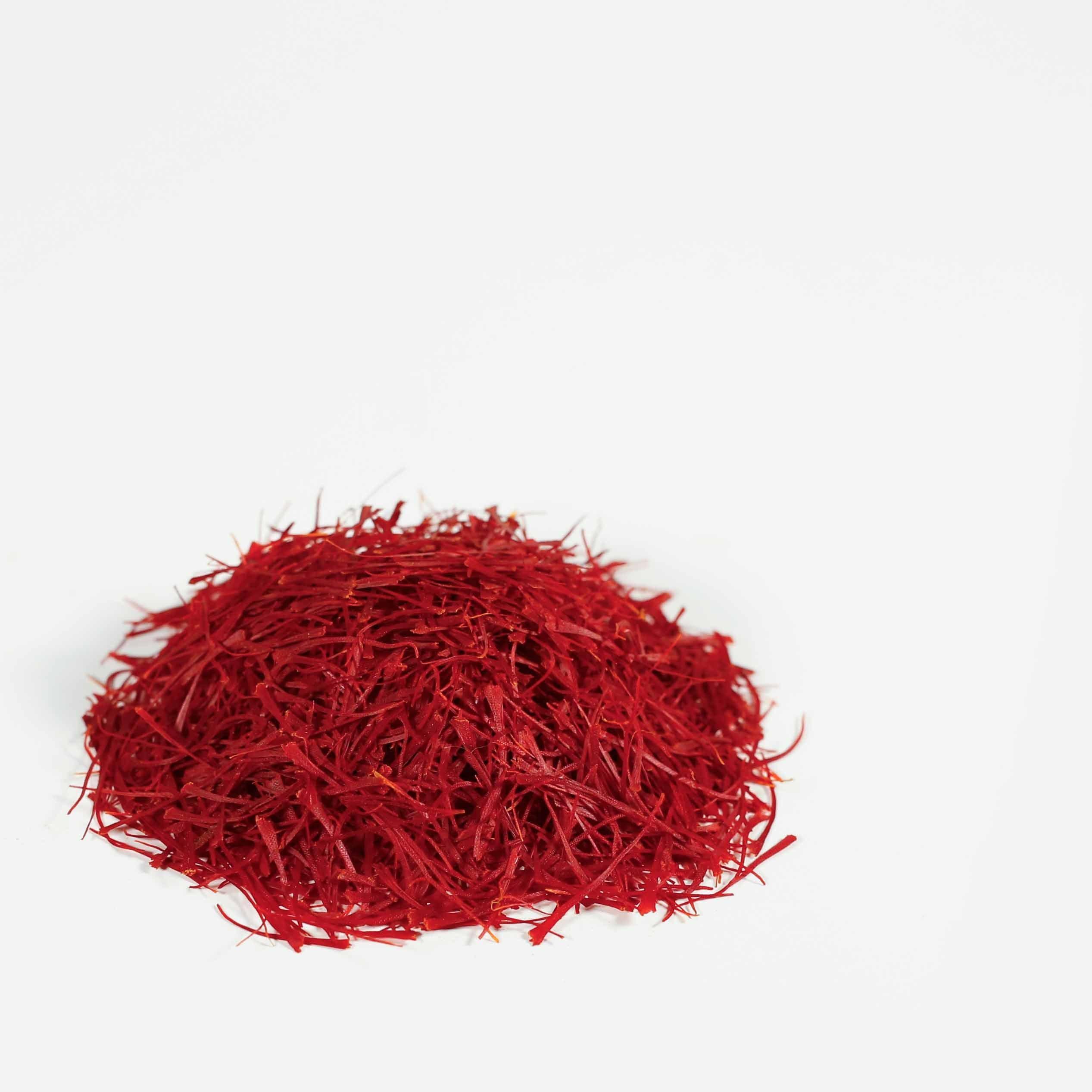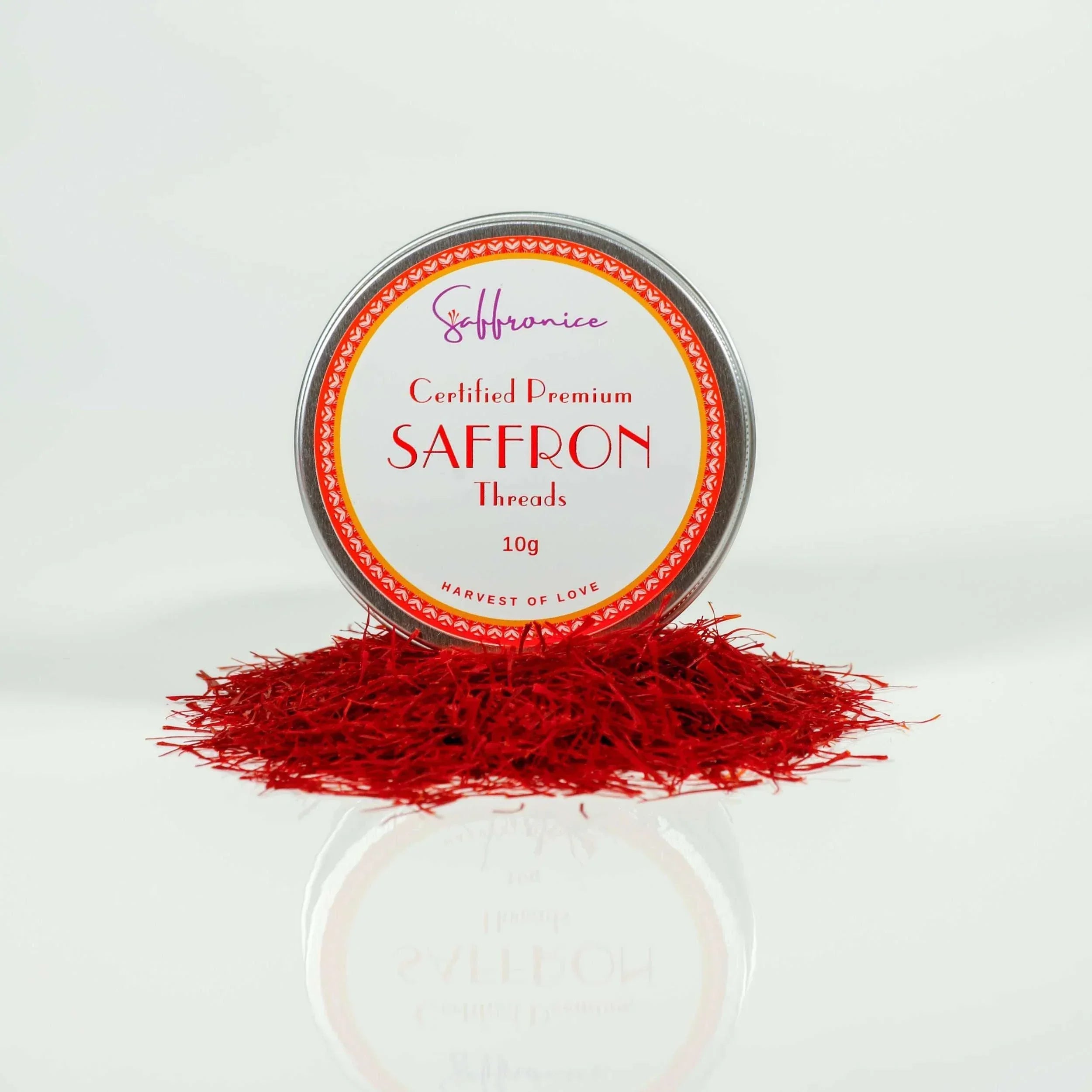Because saffron is so costly and sometimes hard to find, many home cooks and professional chefs look for suitable substitutes that can mimic its qualities. While no alternative can completely replicate saffron's smell and taste, there are options that wont even come close enough but can enhance your meals to a point. The key is to understand the limitations of these substitutes and know how to use them effectively.
In addition to its flavor, saffron's vibrant color also adds warmth and elegance to various dishes. This saffron color guide explores the cultural significance, culinary uses, and different shades of saffron, offering a comprehensive understanding of this golden spice's impact.
Key takeaway: Saffron substitutes can help you achieve similar results in your cooking without breaking the bank. It's essential to select the right substitute for each dish to maintain both flavor and visual appeal.

Understanding Saffron: The Golden Spice of Flavor and Aroma
Description and Origin
Saffron, often referred to as "red gold," is derived from the flower of Crocus sativus. This precious spice is harvested by hand from the delicate stigmas of the flower. Each flower contains only three stigmas, which contribute to saffron's exclusivity and high price point.
Unique Flavor Profile
Saffron boasts a complex flavor profile that makes it a standout ingredient:
- Sweet Notes: A subtle sweetness that can enhance both savory and sweet dishes.
- Floral Undertones: Adds a gentle floral aroma reminiscent of honey.
- Earthy Essence: An underlying earthiness that grounds its flavor.
This intricate combination creates a unique taste experience that's hard to replicate with other spices.
Reasons for Its High Cost
Several factors contribute to saffron's status as one of the most expensive spices in the world:
- Labor-Intensive Harvesting: Each stigma must be carefully picked by hand, with around 75,000 flowers needed to produce just one pound of saffron.
- Limited Growing Regions: Crocus sativus thrives in specific climates found in regions like Iran, India (Kashmir), and Greece.
- High Demand: Saffron's versatility in culinary and medicinal applications drives global demand.
Captivating Aroma
Saffron's aroma sets it apart from other spices. It combines:
A rich bouquet of floral, honey-like notes with an earthy musk that elevates any dish it touches.
The scent alone can transform the culinary experience, making every meal feel gourmet.
These characteristics highlight why saffron is cherished worldwide. Yet, due to its high cost and limited availability, finding suitable substitutes becomes essential for many cooks looking to recreate its magic on a budget.
The Quest for Saffron Substitutes: Navigating Cost and Availability
Finding a true saffron replacement is like searching for a unicorn. The distinct aroma and flavor of saffron are nearly impossible to replicate precisely. This challenge becomes even more significant when you consider why people look for substitutes in the first place.
Why Seek Saffron Alternatives?
Saffron, often dubbed the "golden spice," comes with a golden price tag. Its high cost stems from the labor-intensive process of harvesting tiny threads from the Crocus sativus flower. This makes it one of the most expensive spices in the world. For many, this cost is prohibitive, leading them to seek more affordable spices.
Another factor is availability. Saffron isn't always readily accessible in every region, making it difficult for some cooks to get their hands on it. These constraints drive the need for viable substitutes that can mimic saffron's unique qualities without breaking the bank.
Balancing Color and Flavor
When substituting saffron in recipes, understanding the importance of color versus flavor is crucial. Saffron imparts a vibrant yellow-orange hue to dishes, which can often be replicated using other ingredients like turmeric or paprika. However, these alternatives fall short in matching saffron's complex flavor profile.
- Color: Turmeric is commonly used as a substitute for saffron's color due to its bright yellow pigment. Paprika can also contribute to color but adds a different shade and taste.
- Flavor: No single spice can fully emulate saffron's sweet, floral, and earthy notes. Combining different spices might help get closer to its flavor but won't be an exact match.
Cooking with saffron substitutes means striking a balance between achieving the desired visual appeal and preserving the dish's intended taste. While substitutes like turmeric and paprika work well visually, they require careful blending with other spices to approach anything close to saffron's unique aroma and flavor.
Navigating these aspects helps ensure that while your dish may not have genuine saffron, it still delivers a delightful culinary experience that's both visually appealing and flavorful.
Can Turmeric Replace Saffron? The Answer Might Surprise You.
Understanding the Flavor Differences Between Turmeric and Saffron
When we talk about saffron substitutes, turmeric often comes up as a common alternative. But how do these two spices really compare? Let's dive into the flavor profiles and see where they stand.
Turmeric is known for its earthy taste and musty aroma. It's a staple in Indian cuisine, bringing a warm, slightly bitter flavor to dishes. The color is a vibrant yellow-orange, which makes it a popular choice for replicating saffron’s brilliant hue. However, when it comes to flavor, there are notable differences.
Saffron, on the other hand, offers a sweet, floral, and earthy profile. Its aroma is captivating, with honey-like nuances that elevate any dish. This unique combination of flavors and scents is what makes saffron irreplaceable in many recipes.
Here's a quick comparison:
|
Aspect Color
|
Turmeric Bright yellow-orange
|
Saffron Deep red threads that turn golden when soaked
|
|
Flavor
|
Earthy, slightly bitter
|
Sweet, floral, earthy
|
|
Aroma
|
Musty
|
Honey-like, aromatic
|
Exploring the Limitations of Using Turmeric as a Direct Replacement for Saffron in Cooking
Using turmeric instead of saffron can yield mixed results. While turmeric can mimic the color of saffron to some extent, the flavor disparity can significantly impact your dish.
- Flavor Impact: Dishes like paella or biryani rely heavily on saffron’s unique taste. Substituting with turmeric might provide the right color but will lack the depth and complexity of saffron.
- Aroma Difference: The musty aroma of turmeric can dominate the dish if not balanced correctly. Saffron's fragrance, on the other hand, tends to blend seamlessly with other ingredients.
- Culinary Context: In recipes where saffron is used sparingly for its subtlety (like risottos or desserts), turmeric’s robust flavor could overpower other elements.
In essence, while turmeric can be a good stand-in for achieving a similar visual appeal in your dishes, it won’t replicate that sweet-floral-earthy magic of saffron.
For more insights into whether saffron is the same as turmeric, including their origins and culinary applications, check out this comprehensive guide.
Pro Tip: If you're aiming for both color and a hint of complexity in flavor without using saffron, consider combining turmeric with other spices like paprika or even marigold petals (calendula). This blend can help bridge some of the gaps left by using turmeric alone.
The primary advantage of using turmeric is its ability to mimic saffron's striking yellow color. This makes it a popular choice for dishes where the visual appeal is crucial, such as paella or biryanis. However, when it comes to taste, the disparities between these two spices can impact dish outcomes significantly.
Key Differences and Their Impact
- Earthiness vs. Floral Notes: Turmeric's earthy and slightly bitter undertones may overwhelm the subtle sweetness of dishes that originally call for saffron. For instance, in a creamy risotto or delicate seafood dish, turmeric might alter the intended flavor balance.
- Aroma Comparison: The musty aroma of turmeric can clash with the desired fragrance of recipes designed around saffron’s floral scent. This difference can be particularly noticeable in desserts like saffron-infused puddings or custards.
- Flavor Intensity: Using too much turmeric can lead to bitterness, especially if the recipe relies on saffron's gentle flavor to complement other ingredients.
While turmeric offers a budget-friendly option for achieving saffron’s color, its distinct taste may not always align with the culinary goals of every recipe. Understanding these limitations helps in making informed decisions about when and how to use turmeric effectively as a substitute for saffron.
Enhancing Flavor and Color in Dishes: Combining Turmeric with Other Spices Like Paprika
Benefits of Mixing Turmeric with Paprika for Enhanced Color and Flavor
When it comes to finding the best substitutes for saffron, combining turmeric with paprika can be a game-changer. Turmeric offers that vibrant yellow hue reminiscent of saffron, while paprika brings a sweet, smoky flavor that can add depth to your dishes.
- Color Enhancement: Turmeric’s bright yellow color mimics saffron’s golden glow, making it a popular choice for visual appeal.
- Flavor Boost: Paprika contributes a subtle sweetness and smoky undertone, which complements the earthy notes of turmeric, creating a more complex flavor profile.
- Cost-Effective: Both spices are relatively inexpensive compared to saffron, making them budget-friendly options for home cooks.
- Availability: Turmeric and paprika are readily available in most grocery stores, solving the availability issue often associated with saffron.
How to Achieve a Balanced Flavor Profile When Using a Combination of Turmeric and Paprika?
Combining turmeric and paprika effectively requires an understanding of their individual characteristics. While turmeric provides color and a mild earthy flavor, paprika adds sweetness and smokiness. To achieve a balanced flavor profile:
- Start Small: Begin with small quantities to avoid overwhelming your dish.
- Taste as You Go: Continuously taste your dish as you add these spices to adjust the balance.
- Pairing with Other Ingredients: Incorporate other ingredients like garlic, onions, or lemon juice to complement the flavors of turmeric and paprika.
Suggested Ratios and Combinations to Try Out in Your Dishes
Experimenting with different ratios can help you find the perfect blend for your recipes. Here are some suggested combinations:
- For Paella or Rice Dishes:
- Turmeric: 1/4 teaspoon
- Paprika: 1/2 teaspoon
- For Soups and Stews:
- Turmeric: 1/2 teaspoon
- Paprika: 1 teaspoon
- For Marinades or Rubs:
- Turmeric: 1/4 teaspoon
- Paprika: 1 teaspoon
Practical Tips for Using Turmeric and Paprika Together
- Heat Activation: Both spices release their flavors more effectively when heated. Sauté them briefly in oil at the beginning of your cooking process.
- Storage Tips: Keep your spices in airtight containers away from light to maintain their potency.
- Complementary Spices: Consider adding cumin, coriander, or chili powder to enhance the overall flavor profile.
By combining turmeric with paprika, you can create dishes that not only look stunning but also taste delicious. This blend serves as one of the best substitutes for saffron when cooking with saffron alternatives is necessary due to cost or availability constraints.
Other Alternatives to Saffron You Might Consider Beyond Turmeric
Safflower: The So-Called 'Mexican Saffron'
Safflower, often dubbed 'Mexican saffron,' is a common alternative that brings a vibrant yellow-orange hue to dishes. Derived from the petals of the Carthamus tinctorius plant, safflower lacks the distinctive sweet and floral aroma of saffron but can be used to mimic its color.
Key Characteristics:
- Color: Bright yellow-orange
- Flavor: Mild and slightly earthy
- Cost: Significantly cheaper than saffron
Annatto Seeds: Nature's Coloring Agent
Annatto seeds, harvested from the Bixa orellana tree, are another option for substituting saffron's color. These seeds are commonly used in Latin American and Caribbean cuisines.
Key Characteristics:
- Color: Deep orange-red
- Flavor: Slightly peppery and nutty
- Cost: Affordable and widely available
Evaluating Each Substitute's Effectiveness in Recipes: A Taste Test Experience!
To truly understand how these substitutes measure up, conducting a taste test is invaluable. Here's what we found:
Safflower:
- Appearance: Successfully replicates saffron’s bright color.
- Flavor Impact: Adds minimal flavor; more effective in dishes where color is more important than taste.
- Best Uses: Paellas, rice dishes, and soups.
Annatto Seeds:
- Appearance: Provides a rich, deep orange hue.
- Flavor Impact: Offers a unique peppery note that can complement various recipes.
- Best Uses: Achiote paste for meats, stews, and rice dishes.
Pros and Cons of Each Alternative
Safflower:
Pros:
- Excellent for achieving a similar color to saffron.
- Cost-effective for budget-conscious cooking.
- Readily available in most spice aisles.
Cons:
- Lacks the characteristic aroma and flavor profile of saffron.
- May require additional spices to enhance flavor.
Annatto Seeds:
Pros:
- Imparts a vivid color that rivals saffron.
- Adds a subtle, pleasant flavor dimension to dishes.
- Versatile in various culinary applications beyond just coloring.
Cons:
- Flavor differs significantly from saffron’s sweet and floral notes.
- Requires preparation (soaking or grinding) before use.
Comparing Prices of Saffron and Its Substitutes
When substituting saffron in recipes, price plays a critical role. Here’s a quick comparison:
Saffron:
- Price per gram: $10-$15 (depending on quality and origin)
Safflower:
- Price per gram: $0.50-$1
Annatto Seeds:
- Price per gram: $0.20-$0.60
These alternatives provide budget-friendly options without compromising too much on visual appeal or adding unwanted flavors.
Exploring these substitutes can help maintain the integrity of your dishes while being mindful of cost and availability.
Cooking Tips Using Saffron Alternatives Successfully Without Compromising on Taste or Presentation
Cooking with saffron substitutes can be a rewarding adventure if done right. Here are some practical tips to help you incorporate these alternatives into your recipes without sacrificing flavor or presentation.
Understand the Role of Saffron in Your Recipe
Before you start substituting, get familiar with saffron's flavor and uses:
- Flavor: Saffron brings a sweet, floral, and slightly earthy taste to dishes.
- Color: It imparts a vibrant yellow-orange hue.
- Aroma: Its captivating scent makes it stand out.
Choosing the Right Substitute
Depending on what aspect of saffron you need—flavor, color, or both—choose your substitute wisely:
- For Color: Turmeric is your go-to. Just a pinch can mimic saffron’s golden hue.
- For Flavor: A mix of turmeric and paprika can come close. The paprika adds a subtle sweetness that complements turmeric’s earthiness.
Combining Spices for Balance
To achieve a balanced flavor profile when using substitutes:
- Mix turmeric with paprika in a 1:3 ratio. This combination enhances both color and flavor.
- Add a bit of cinnamon or cardamom if the recipe calls for a sweeter note.
Experimenting with Other Alternatives
Consider experimenting with other saffron substitutes:
- Safflower (Mexican Saffron): Offers similar color but much milder flavor.
- Annatto Seeds: Provide vibrant color but have a nutty taste.
Practical Tips for Incorporation
To seamlessly blend these substitutes into your cooking:
- Infuse in Liquid: Just like saffron, let your substitute spices steep in warm water or broth before adding them to the dish. This helps release their full potential.
- Use Sparingly: Start with small amounts and adjust based on taste.
- Layer Flavors: Combine different substitutes to build complexity—think turmeric for color, paprika for sweetness, and a touch of cinnamon or cardamom for depth.
"The key is to experiment and adjust until you find the perfect balance that works for your specific recipe."
By understanding how to use these substitutes effectively, you can maintain the desired flavors and colors in your dishes while keeping costs manageable. Happy cooking!
Embracing the Versatility of Saffron Substitutes While Recognizing Their Limitations
Saffron substitutes open up a world of culinary creativity. Understanding how to use saffron alternatives in recipes allows you to maintain vibrant colors and delightful flavors without breaking the bank. While no substitute can fully replicate saffron's unique aroma and flavor, certain combinations can come close.
Key Points to Remember:
- Color vs. Flavor: Some substitutes like turmeric excel in providing color but fall short on flavor.
- Combining Spices: Mixing turmeric with other spices such as paprika can help achieve a more balanced taste.
- Experimentation: Don't be afraid to experiment with different ratios and combinations to find what works best for your dish.
Notable Substitutes:
- Turmeric
- Color: Bright yellow
- Flavor: Earthy, musty
- Paprika
- Color: Deep red
- Flavor: Sweet, smoky
- Safflower (Mexican Saffron)
- Color: Yellow -Flavor: Mild, lacks the depth of saffron
- Annatto Seeds
- Color: Orange-red
- Flavor: Slightly peppery, nutty
Practical Tips:
- Start Small: Use small amounts to avoid overpowering your dish.
- Blending Substitutes: A blend of turmeric and paprika can mimic saffron’s color more accurately.
- Taste Testing: Always taste as you go to ensure the flavors are developing as desired.
Understanding these nuances helps you choose the best saffron substitute for your needs. Happy cooking!
Call to Action: Buy Genuine Saffron from Trusted Sources Like Saffronic.com
When it comes to the real deal, nothing can truly replicate saffron's unique aroma and flavor. To experience the full magic of this golden spice, it's crucial to buy genuine saffron from trusted sources like Saffronic.com.
- Authenticity Guaranteed: Saffronic.com ensures you get pure, high-quality saffron.
- Ethically Sourced: Support sustainable farming practices and small-scale farmers.
- Exceptional Customer Service: Enjoy a seamless shopping experience with detailed product information and prompt delivery.
Investing in authentic saffron enhances your culinary creations, bringing unparalleled flavor and color to your dishes.


